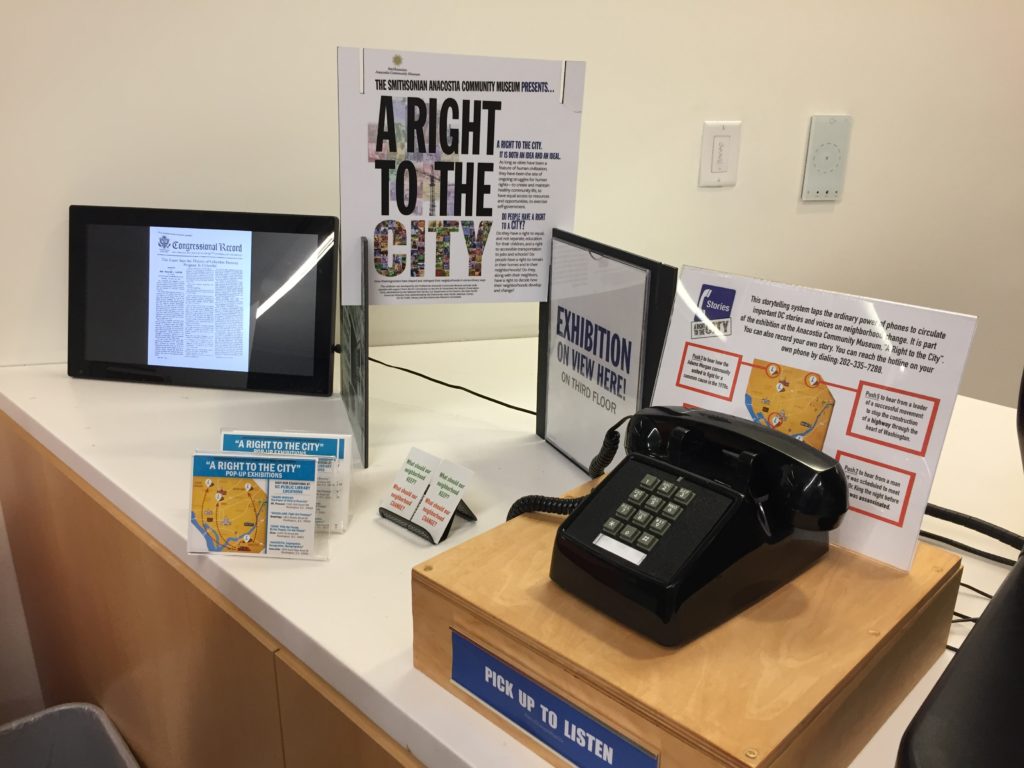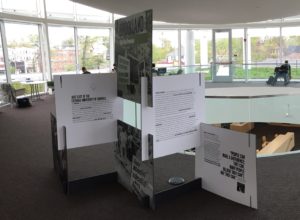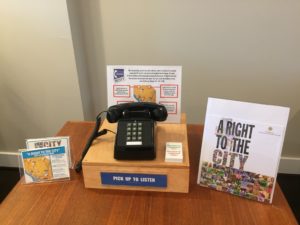Beginning this week, you can find a new prototype at the front desk of the Woodridge Neighborhood Library.

We call it the “classic 1970s” telephone. Picking up the handset immediately connects listeners to the same storytelling hotline that is in the museum. Listeners can hear excerpts from oral histories from the Right to the City exhibit, or leave new stories of their own.
In this installation, the goal is partly to entice patrons to visit the larger satellite exhibition on the 3rd floor of the library, and with the map to visit different branches with distinct content.
Postcards give a map of the satellite exhibits:
Clear advantages of this location include: (1) the foot traffic and visibility at the front desk of the library; (2) proximity to library staff who can answer questions; (3) access to ethernet for reliable data for our VOIP system.
The setting can vary considerably. This one includes the monitor with a slideshow of historic photographs, and the miniature panels that foreshadow the exhibit.
Our general design (with a pedestal by Hazel Arroyo) looks like this:
Hidden design features include: cable to tie the phone down to the pedestal (to minimize curious patrons from walking off with it), and holes to hide the cabling.
We are still learning the design principles to guide this mode of installation. Big questions we have include:
- What signs drive listening, versus recording new stories?
- Can we spur repeat visits by featuring new content?
- Should the hotline respond to this phone in particular, and give specialized greetings to Woodridge patrons, or localized guidance to stories that are nearby, or other satellite exhibits that are nearby?
This post was originally contributed in July 2019 on dc.storytelling.city, a Playful City Lab project website.


